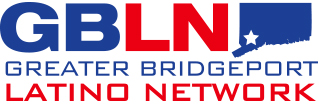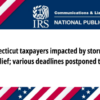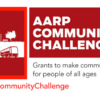This was crossposted from the Smithsonian Learning Lab blog.
Every year across America communities gather together to celebrate National Hispanic Heritage Month, which is observed September 15 to October 15. Starting in July, Smithsonian educators receive phone calls and emails inquiring about resources that will help showcase these communities and their contributions to American society. So this year, we decided to answer those burning questions about why and how we should celebrate this month. And we decided to do it, in a top 8 listicle, because learning should be fun!
1) Why do we celebrate the Hispanic community in the United States?
According to the U.S. Census Bureau, there are 56.6 million Hispanics in the United States or 17.6 percent of the country’s population as of July 2015. Hispanics or Latinos have contributed to American life since the American Revolution, fighting in every war since then. Latinos today continue to advance communities across the country as small business owners, veterans, teachers, and public servants, among many other professions. Hispanic Heritage Month allows us to recognize their achievements and contributions to our national story.
2) What were the beginnings of Hispanic Heritage Month?
Originally, Hispanic Heritage Month was Hispanic Heritage Week, started in 1968 under President Johnson. In 1988, President Reagan enacted a public law to celebrate a 30-day Hispanic Heritage Month, starting on September 15, the independence day of five Central American countries. Within the month, other Latin American countries celebrate their independence as well.
3) Have you heard the common quote “We did not cross the border, the border crossed us”?
Because of the Mexican-American and Spanish-American wars, two treaties were put in place (The Treaty of Guadalupe Hidalgo and the Treaty of Paris, respectively) that gave the United States territories in the Southwest and Puerto Rico, incorporating the peoples of this area into the United States. Learn more here:
4) Did you know that in America today, one in four children is Hispanic?
Sandra Cisneros writes about a young girl, Esperanza, in her classic coming-of- age story, The House on Mango Street. Used in classrooms across America, the novel is about growing up Latina in Chicago and the importance of family and traditions.
5) Did you know that food is a common language and brings us together?
Ezequiel Moreno started a Mexican bakery and restaurant out of his home in 1918, moving to La Plaza in the heart of Los Angeles in 1920. He named his bakery La Esperanza, meaning hope. Until the 1970s, their bread, coffee, Mexican dishes, and “American-style” lunches brought all kinds of people together, from Mexican immigrants, to downtown employees, to even Hollywood movie stars.
Bakeries today continue this tradition of community with El Bolillo Bakery in Houston, baking an estimated 4,400 pounds of flour into Mexican bread to help those in need after Hurricane Harvey.
6) Did you know that baseball played a role in Latino community building?
Latino community baseball leagues across the United States provided a place for people to build relationships, organize, and engage with younger community members. At the Major League level, Roberto Clemente, player for the Pittsburgh Pirates, was a Hispanic civil rights activist and a close collaborator with Rev. Martin Luther King, Jr. Learn more here:
7) Did you know that Latin Jazz is a combination of African-American and Latin rhythms first mixed together in the 1940s?
Jazz legend Dizzy Gillespie and Cuban percussionist Chano Pozo first collaborated to create Afro-Cuban rhythms and jazz. New York’s Palladium Ballroom became the hub of Latin jazz with greats such as Tito Puente, Machito and his Afro-Cubans, and Tito Rodriguez, among others. Learn more here:
8) Did you know that contrary to popular belief, Day of the Dead is not Halloween?
Celebrated on November 1 and 2, Day of the Dead remembers family and community members that have passed. Originally from Meso-America but now celebrated in Latino communities across the United States, the commemoration combines indigenous and Catholic rituals.
SLC Day of the Dead Bilingual Curriculum-Based Resources
¡Saludos!
Your friends at the Smithsonian/ Sus amigos en el Smithsonian
This was written by Emily Key, Education Programs Manager, and Adrián Aldaba, Associate to the Director and Programs, Smithsonian Latino Center.










